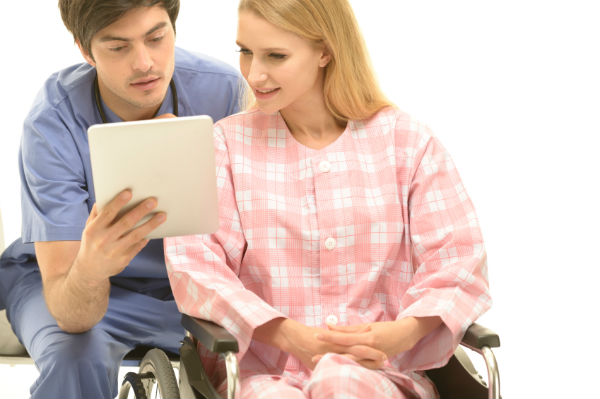Telemedicine in Japan and Possible Cloud Computing Applications

Telemedicine literally means long-distance medicine, medicine from afar. And communications technologies have always developed alongside telemedicine. The telephone resulted in telemedical experiments being carried out through traditional telephone lines. The same happened with telecommunication satellites and the development of the internet. In this article we will take a look at one of the three main branches of telemedicine, teleconsultation, and how it has been developed in Japan.
1996 was very important for field because the Japanese government relaxed many of its policies which were holding back the development of telemedicine in this country. We are now observing the cloud being used for information and data management and to interact with other medical professionals around the globe. One of the hopes of this field of research is to eventually develop a virtual hospital which will attend to patients directly via the web. However there are many obstacles, including private data security, possible malpractice and vulnerability concerns, and unreliability of the telecommunications system in life and death situations.
Understanding telemedicine
There are three main branches of telemedicine:
1. Remote patient care – This refers to cases where the doctor can treat and diagnose a patient from a remote location.
2. Teleconsulation – This refers to communication between medical professionals, allowing general practitioners to consult with specialists or for doctors in remote areas to gain access to pathology and radiology services.
3. Medical e-learning – This refers to the use of the cloud to help doctors in remote locations to always receive up to date information in their field.
Telemedicine and Japan
The first telemedicine experiments in Japan were carried out in 1971 by the Medical Association of Wakayama. Infrastructure was set up to allow rapid communications via FAX (for example, to transmit electrocardiograms). A curious thing about this period is that transmission of this kind of data through a modem was illegal due to government regulation. Although experiments continued to be carried out, it wasn’t until 1991 when telemedicine started to be used actively to treat patients and increase the efficiency of the health system. One example of this is the field of pathology.
In Japan, pathologists have always been in short supply, not because there are few but because they are unevenly distributed throughout the country. Because of this, one of the first successful telemedicine applications involved remote pathology consultations using high definition images, remote control of special microscopes, and direct data links. Each year, the number of new papers and research in remote patient care and consultation increase, and it is clear that the adoption of these technologies in Japan is now a priority.
What the cloud has to offer to traditional medicine
The main advantage of implementing cloud technology is that it gives all patients equal access to medical services, despite the fact that certain regions are more remote than others. This is especially important when it comes to specialists and other services usually inaccessible outside of large urban centers.
The cloud also allows quicker collaboration between medical professionals. For example, the implementation of data transmission from ambulances to the cloud can allow doctors in the emergency room to access patient information while the patient is already on his way. There are three areas where the cloud has been particularly useful in the Japanese health care system:
1. Patient care and monitoring, particularly in the case of elderly patients at home and patients with chronic diseases that require constant monitoring.
2. Transmission of MRI, CAT scans, and other images to a radiologist or other qualified professional.
3. Management of patient medical records, allowing doctors to have a centralized source for all medical information for a patient’s medical history, accessing it all from a terminal.
Telemedicine is growing at a dramatic pace in Japan and the cloud is an integral part of its development. It is also certain that the demand for supplies for home care and monitoring will continue to increase. With apps capable of monitoring a patients vital signs, medication intake, and other diagnostic reference points, the cloud is quickly becoming an important medical tool.
Be Part of Our Cloud Conversation
Our articles are written to provide you with tools and information to meet your IT and cloud solution needs. Join us on Facebook and Twitter.
About the Guest Author:

Nida Rasheed is a freelance writer and owner of an outsourcing company, Nida often finds herself wanting to write about the subjects that are closest to her heart. She lives in Islamabad, Pakistan and can be found on Twitter @nidarasheed.


